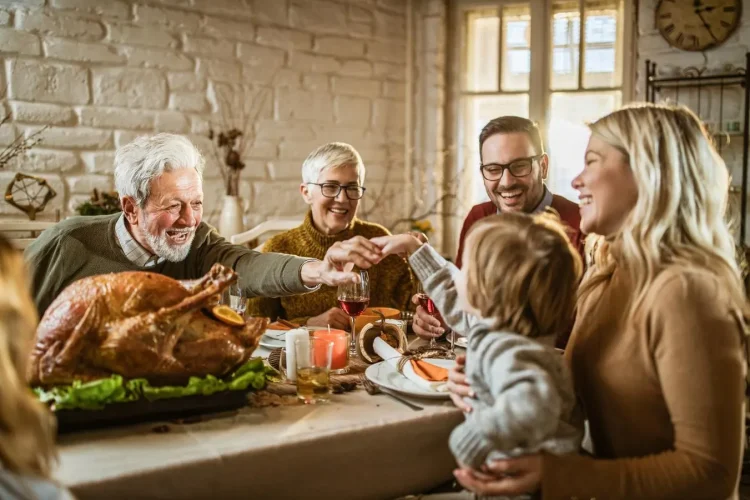A History of Thanksgiving: From Harvest Feast to National Holiday

the familiar imagery suggests. Delving into its history reveals a tapestry woven with threads of survival, cultural exchange, and political maneuvering.
The Myth and Reality of the First Thanksgiving
Popular lore paints a picture of the first Thanksgiving as a harmonious gathering between the Pilgrims and the Wampanoag Native Americans, a shared feast celebrating a bountiful harvest. While this image holds a powerful grip on the American psyche, it’s essential to approach it with a critical eye.
The Pilgrims, also known as Separatists, were English religious dissenters who sought religious freedom in the New World. After a perilous voyage on the Mayflower, they landed in Plymouth, Massachusetts, in 1620. Their first winter was marked by hardship and disease, with nearly half the colony perishing. It was during this challenging period that they forged an alliance with the Wampanoag, led by Chief Massasoit. This alliance proved crucial to the Pilgrims’ survival, as the Native Americans taught them how to cultivate corn, fish, and hunt.
In the autumn of 1621, after a successful harvest, Governor William Bradford organized a three-day celebration to give thanks for their survival. The event, while undoubtedly significant, was more of a celebratory feast than a formal Thanksgiving. The term “Thanksgiving” itself was not used by the Pilgrims at the time. Moreover, the relationship between the Pilgrims and the Wampanoag was complex and fraught with tension, even as they maintained a precarious peace.
Thanksgiving as a Colonial Tradition
While the 1621 feast laid the groundwork, the concept of Thanksgiving as a recurring holiday emerged gradually. Early colonial settlements, influenced by English customs, observed days of thanksgiving for various reasons, such as bountiful harvests, military victories, or the end of epidemics. These celebrations were often marked by religious services, feasting, and communal gatherings.
However, Thanksgiving did not become a widely celebrated national holiday until the 19th century. Sarah Josepha Hale, an influential writer and editor, championed the idea of a national Thanksgiving day. Through her editorials and letters to prominent figures, including several presidents, she tirelessly advocated for a holiday that would promote unity and national pride.
Lincoln and the National Thanksgiving
Hale’s efforts finally bore fruit during the Civil War. In 1863, President Abraham Lincoln issued a proclamation designating the last Thursday of November as a national day of Thanksgiving. His decision was motivated by a desire to foster unity and heal the deep divisions caused by the war. By establishing Thanksgiving as a national holiday, Lincoln hoped to create a shared moment of gratitude and reflection for a nation grappling with its darkest hour.
Thanksgiving in the Modern Era
Since Lincoln’s proclamation, Thanksgiving has evolved into a beloved American tradition. The holiday has expanded beyond its religious roots to become a secular celebration of family, food, and gratitude. While the traditional Thanksgiving menu has remained relatively constant, with turkey, stuffing, mashed potatoes, and pumpkin pie as staples, the holiday’s cultural significance has broadened to encompass a diverse range of customs and traditions.
In recent years, there has been a growing awareness of the complex history of Thanksgiving, particularly the often-overlooked contributions of Native Americans. Efforts to incorporate Native American perspectives into the holiday narrative have gained momentum, leading to a more nuanced and inclusive understanding of its origins.
Beyond the United States
While Thanksgiving is primarily associated with the United States, it is also celebrated in Canada, albeit on a different date (the second Monday of October). Canadian Thanksgiving shares some similarities with its American counterpart, as it also originated as a harvest festival. However, the holiday’s history and traditions in Canada have distinct characteristics.
Conclusion
The history of Thanksgiving is a rich and multifaceted story that intertwines elements of survival, cultural exchange, and political maneuvering. From its humble beginnings as a harvest feast to its evolution into a national holiday, Thanksgiving has undergone significant transformations while retaining its core values of gratitude and togetherness.





